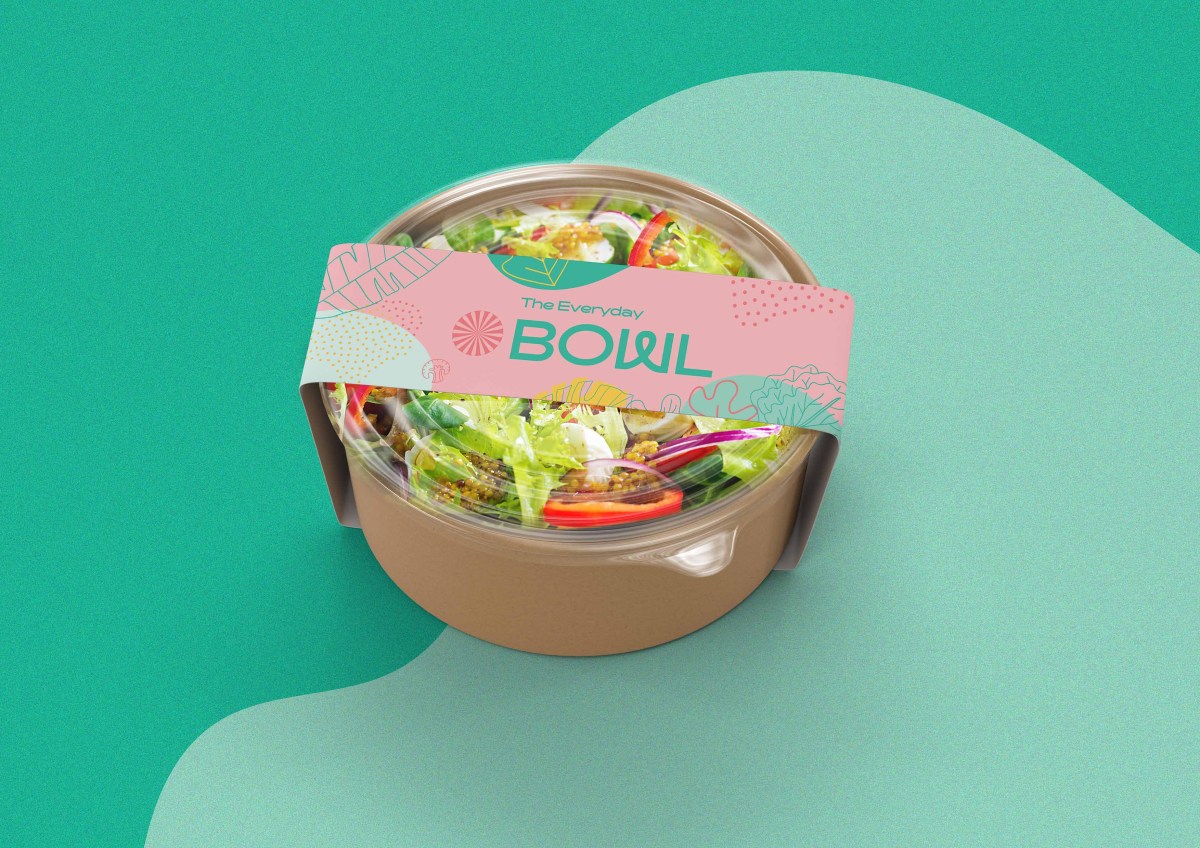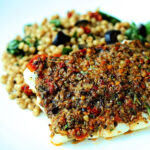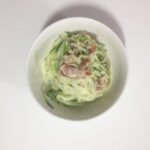Embark on a culinary adventure with vibrant, flavorful Banting bowls! This exploration delves into the art of creating visually stunning and nutritionally packed meals, perfect for those following the Banting diet or simply seeking healthy and delicious alternatives. We’ll uncover the secrets to crafting diverse recipes, mastering plating techniques, and unlocking a world of exciting flavor combinations, all while ensuring each bowl is a feast for the eyes and a delight for the palate. Prepare to be inspired by the endless possibilities of creative Banting bowls.
From the careful selection of seasonal vegetables and high-quality proteins to the artful arrangement of ingredients and the creation of unique spice blends, we’ll guide you through every step. Learn how to balance textures, colors, and flavors to achieve a truly unforgettable dining experience. Discover how simple adjustments can cater to various dietary needs and preferences, making Banting bowls accessible and enjoyable for everyone.
Recipe Variations
Banting bowls offer a delicious and versatile way to enjoy a low-carb, high-fat diet. The beauty of these bowls lies in their adaptability; you can create countless variations by swapping proteins, vegetables, and sauces to suit your taste and dietary needs. The following recipes provide a starting point for your own culinary explorations.
Three Unique Banting Bowl Recipes with Different Protein Sources
These recipes showcase the versatility of Banting bowls by using three distinct protein sources: chicken, fish, and beef. Each bowl is packed with flavor and nutrients, making them a satisfying and healthy meal option.
- Chicken Banting Bowl: Serves 1. Ingredients: 4oz grilled chicken breast (cubed), 1 cup roasted broccoli florets, ½ cup sautéed zucchini and yellow squash, ¼ cup crumbled feta cheese, 2 tbsp olive oil and lemon juice dressing. A vibrant bowl featuring the tender texture of chicken complemented by the slight bitterness of broccoli and the sweetness of zucchini and yellow squash.
- Salmon Banting Bowl: Serves 1. Ingredients: 4oz pan-seared salmon fillet (flaked), 1 cup steamed asparagus spears, ½ cup shredded red cabbage, 1 tbsp toasted sesame seeds, 2 tbsp creamy avocado dressing. This bowl offers a rich, umami flavor profile from the salmon, balanced by the slightly sweet asparagus and the crispness of the red cabbage.
- Beef Banting Bowl: Serves 1. Ingredients: 4oz stir-fried beef strips (sirloin), 1 cup roasted Brussels sprouts, ½ cup sautéed mushrooms, ¼ cup chopped walnuts, 2 tbsp balsamic vinaigrette. This hearty bowl features tender beef, earthy mushrooms, and the slightly bitter Brussels sprouts, all brought together by a tangy balsamic vinaigrette.
Five Banting Bowl Recipes Featuring Diverse Vegetable Combinations
The following table Artikels five Banting bowl recipes, each highlighting a different combination of seasonal vegetables and their associated nutritional benefits. The selection of vegetables is influenced by their availability and nutritional density, ensuring a balanced and flavorful meal.
| Name | Ingredients | Summary | Nutritional Highlights |
|---|---|---|---|
| Autumn Harvest Bowl | Roasted butternut squash, Brussels sprouts, kale, 4oz grilled lamb | Sweet and savory flavors, rich in vitamins A and C. | High in fiber, Vitamin A (from butternut squash), Vitamin C (from Brussels sprouts and kale) |
| Spring Greens Bowl | Asparagus, spinach, peas, 4oz pan-seared cod | Light and refreshing, packed with folate and antioxidants. | Excellent source of folate, Vitamins K and C |
| Summer Sunshine Bowl | Zucchini, yellow squash, bell peppers, 4oz grilled chicken | Bright and flavorful, rich in vitamins and antioxidants. | High in Vitamin C, Vitamin A (from bell peppers), potassium |
| Winter Warmer Bowl | Cauliflower, parsnips, carrots, 4oz beef stew | Hearty and comforting, rich in fiber and vitamins. | Good source of fiber, Vitamin K, Vitamin C |
| Rainbow Veggie Bowl | Broccoli, carrots, red cabbage, cherry tomatoes, 4oz baked salmon | Colorful and nutritious, packed with vitamins and minerals. | Excellent source of Vitamins A, C, and K, fiber |
Three Banting Bowl Recipes Emphasizing Different Flavor Profiles
These recipes demonstrate how easily Banting bowls can adapt to various culinary traditions, showcasing the versatility of this dietary approach.
- Mediterranean Banting Bowl: Step 1: Roast 1 cup of chopped eggplant and zucchini until tender. Step 2: Grill 4oz of chicken breast. Step 3: Combine roasted vegetables with grilled chicken, ¼ cup crumbled feta cheese, and 2 tbsp olive oil and lemon juice dressing. The result is a light, refreshing bowl with bright Mediterranean flavors.
- Asian-Inspired Banting Bowl: Step 1: Stir-fry 4oz of beef strips with ½ cup broccoli florets and ½ cup sliced shiitake mushrooms in a soy sauce-ginger marinade. Step 2: Serve over a bed of ½ cup shredded bok choy. Step 3: Garnish with 1 tbsp sesame seeds. This bowl offers a savory and umami-rich experience, characteristic of Asian cuisine.
- Mexican Banting Bowl: Step 1: Sauté 4oz of shrimp with ½ cup chopped bell peppers and onions. Step 2: Season with chili powder, cumin, and a pinch of cayenne pepper. Step 3: Serve over a bed of 1 cup cauliflower rice. Step 4: Top with ¼ cup chopped cilantro and a dollop of guacamole. This vibrant bowl offers a spicy and satisfying taste, reminiscent of traditional Mexican flavors.
Step-by-Step Recipe Creation
Crafting flavorful and visually stunning Banting bowls requires attention to detail at every stage, from ingredient selection to the final plating. This section provides detailed, step-by-step recipes and explores the crucial role of proper food preparation techniques in achieving both delicious and aesthetically pleasing results. Mastering these techniques elevates your Banting bowls from simple meals to culinary masterpieces.
Mediterranean Delight Banting Bowl Recipe
This vibrant bowl bursts with the fresh flavors of the Mediterranean. The recipe emphasizes simple, wholesome ingredients prepared with care to maximize their natural flavors and textures. Precise measurements ensure consistent results, allowing you to recreate this delicious bowl time and again.
- Preparation (15 minutes): Begin by finely dicing one cucumber (approximately 1 cup), finely chopping half a red onion (approximately ½ cup), and roughly chopping one cup of cherry tomatoes. Halve 100g of Kalamata olives.
- Protein Cooking (10 minutes): In a separate pan, cook 150g of grilled chicken breast, cut into bite-sized pieces. Alternatively, you can use 150g of cooked shrimp or pan-fried halloumi cheese. Season with salt and pepper to taste.
- Dressing (5 minutes): Whisk together 2 tablespoons of olive oil, 1 tablespoon of lemon juice, 1 teaspoon of dried oregano, ½ teaspoon of salt, and ¼ teaspoon of black pepper in a small bowl. The dressing should be emulsified for optimal flavor distribution.
- Assembly (5 minutes): In a large bowl, gently combine the diced cucumber, red onion, cherry tomatoes, Kalamata olives, and cooked protein. Pour the dressing over the mixture and toss gently to coat all ingredients evenly.
- Garnish and Serve: Garnish with fresh dill or parsley and serve immediately. A sprinkle of feta cheese (optional) adds a salty, creamy contrast.
The Importance of Proper Food Preparation Techniques
The visual appeal and flavor profile of a Banting bowl are significantly enhanced by meticulous food preparation. Consistent chopping ensures even cooking and a pleasing presentation. For example, uniformly diced vegetables cook more evenly than irregularly chopped ones, preventing some pieces from becoming mushy while others remain undercooked. Similarly, using appropriate cooking methods for each ingredient helps to maintain its texture and flavor. Grilling chicken breast, for instance, brings out its natural juices and imparts a smoky flavor, whereas boiling might lead to a dry and bland result. Careful ingredient selection is also paramount; opting for fresh, high-quality produce significantly impacts the overall taste and appearance of the dish. Using ripe tomatoes, for instance, will result in a richer flavor compared to using unripe ones.
Spicy Asian Fusion Banting Bowl Recipe
This recipe showcases the art of balancing sweet, sour, spicy, and savory flavors in a vibrant Asian-inspired Banting bowl. The careful layering of flavors creates a complex and satisfying culinary experience.
- Preparation (15 minutes): Finely slice 1 red bell pepper and 1 cup of broccoli florets. Finely chop 2 cloves of garlic and 1 small red chili (adjust amount to taste). Thinly slice 100g of cooked sirloin steak.
- Sauce (10 minutes): Whisk together 2 tablespoons of soy sauce (low sodium), 1 tablespoon of rice vinegar, 1 tablespoon of sesame oil, 1 teaspoon of honey, 1 teaspoon of grated ginger, and ½ teaspoon of red pepper flakes. Adjust sweetness and spiciness to preference.
- Stir-fry (10 minutes): In a wok or large pan, stir-fry the red bell pepper and broccoli florets until tender-crisp. Add the garlic and chili and stir-fry for another minute. Add the sliced sirloin and stir-fry until heated through.
- Combine and Serve: Pour the sauce over the stir-fried vegetables and meat. Toss gently to combine and coat everything evenly. Serve immediately garnished with sesame seeds and chopped spring onions.
Troubleshooting Common Cooking Issues
Overcooked vegetables can become mushy and lose their vibrant color. To prevent this, stir-fry vegetables quickly over high heat, ensuring they retain a crisp texture. If the sauce is too thick, add a teaspoon of water or more rice vinegar to thin it out. Conversely, if it’s too thin, simmer it for a few minutes to reduce it. Adjusting seasoning is crucial; taste the dish throughout the cooking process and adjust the salt, pepper, and other spices as needed. Using fresh, high-quality ingredients is also key to achieving the best flavor. Stale vegetables or low-quality protein will affect the overall taste of the dish.
Dietary Considerations & Adaptations

Banting bowls, with their emphasis on healthy fats, protein, and low-carbohydrate vegetables, offer remarkable flexibility for adapting to diverse dietary needs and preferences. The core principle remains consistent: maximizing nutrient density while minimizing refined carbohydrates and sugars. By making strategic substitutions and adjustments, you can create delicious and satisfying Banting bowls tailored to your specific requirements.
Banting Bowl Adaptations for Various Diets
Creating Banting bowls that cater to vegetarian, vegan, or nut-free diets requires mindful ingredient swaps. For vegetarian options, consider substituting protein sources like grilled halloumi cheese, chickpeas, lentils (in moderation), or a hearty portion of avocado. Vegan adaptations can utilize tofu, tempeh, or seitan as protein bases, accompanied by an abundance of colorful vegetables and healthy fats from avocado, olives, or seeds (like sunflower or pumpkin seeds). Nut-free versions simply omit nuts and seeds, relying instead on other healthy fats like olive oil, avocado oil, or coconut oil. Remember to always check ingredient labels to ensure products are free from hidden nuts or nut derivatives.
Creating High-Protein, Low-Carb Banting Bowls
Achieving a balanced Banting bowl that’s both high in protein and low in carbohydrates requires careful consideration of macronutrient ratios. Aim for a ratio approximating 40-50% protein, 40-50% healthy fats, and 10-20% carbohydrates from non-starchy vegetables. A high-protein Banting bowl might feature grilled chicken or fish as the protein base, accompanied by a generous serving of leafy greens, avocado slices, and a drizzle of olive oil. Adding a small portion of cooked broccoli or cauliflower provides additional nutrients and fiber without significantly impacting carbohydrate intake. Precise macronutrient percentages will vary depending on the specific ingredients chosen.
Nutritional Comparison of Three Banting Bowl Recipes
The following table compares the nutritional content of three different Banting bowl recipes, showcasing the variety achievable while adhering to Banting principles. Note that these values are estimates and can vary based on specific ingredients and portion sizes. Micronutrient content is highly dependent on the vegetables and other ingredients included.
| Recipe Name | Calories (approx.) | Macronutrients (g) (approx.) Protein/Fat/Carb | Micronutrients (examples) |
|---|---|---|---|
| Chicken & Avocado Banting Bowl | 550 | 40/35/15 | Vitamin A (from avocado and greens), Vitamin K (from greens), Potassium (from avocado and greens) |
| Salmon & Asparagus Banting Bowl | 600 | 35/40/15 | Omega-3 Fatty Acids (from salmon), Vitamin C (from asparagus), Vitamin B12 (from salmon) |
| Tofu & Vegetable Banting Bowl (Vegan) | 450 | 30/45/15 | Iron (from tofu), Vitamin C (from various vegetables), Fiber (from vegetables) |
Creating stunning and flavorful Banting bowls is more than just assembling ingredients; it’s an art form that celebrates healthy eating. By mastering the techniques and principles Artikeld here, you can transform simple ingredients into culinary masterpieces. Whether you’re a seasoned chef or a kitchen novice, the journey of crafting these bowls is a rewarding one, filled with delicious discoveries and the satisfaction of creating healthy, visually appealing, and incredibly tasty meals. So, gather your ingredients, unleash your creativity, and prepare to be amazed by the bursting flavors and vibrant colors of your very own Banting bowl creations.
Frequently Asked Questions
Can I use leftover cooked proteins in my Banting bowls?
Absolutely! Leftover chicken, fish, or beef are perfect additions, saving time and reducing food waste.
Are Banting bowls suitable for vegetarians or vegans?
Yes, with modifications. Replace the protein source with alternatives like tofu, tempeh, lentils, or chickpeas, and ensure other ingredients align with the dietary requirements.
How long can I store leftover Banting bowls?
Store leftover bowls in an airtight container in the refrigerator for up to 3-4 days. Avoid storing for extended periods to maintain freshness and quality.
Can I freeze Banting bowls?
Freezing is possible, but the texture of some ingredients might change upon thawing. It’s best to freeze the components separately and assemble the bowl fresh when ready to eat.
What are some good alternatives to avocado oil?
Other healthy fats suitable for Banting bowls include olive oil, coconut oil, and macadamia nut oil. Choose based on your preferred flavor profile and dietary needs.


